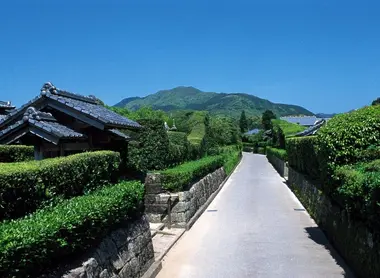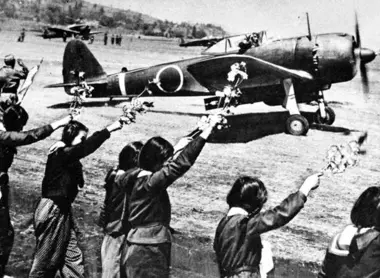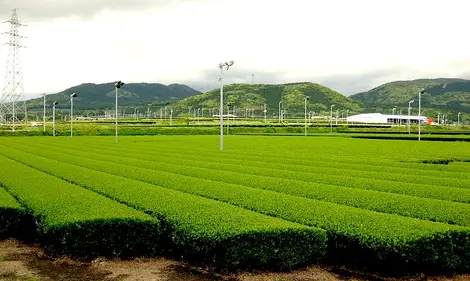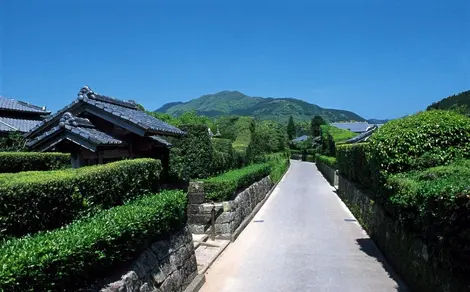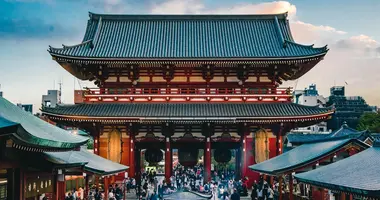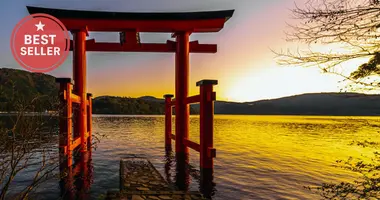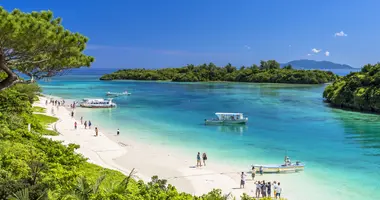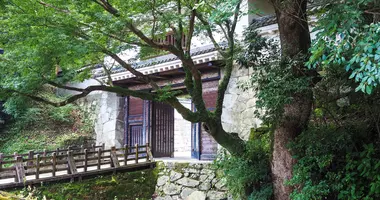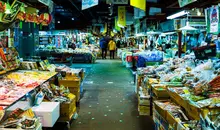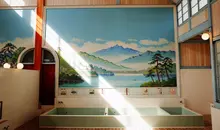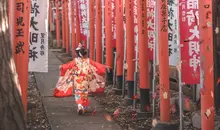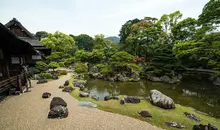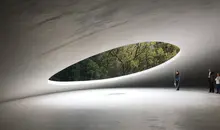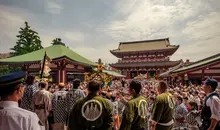Chiran Kagoshima: a journey between samurai district and kamikaze memory
- Published on : 30/09/2014
- by : G.L.
- Youtube
Samurai suicide bombers
Nestled in the heart of Kagoshima prefecture, Chiran is a small town with a rich historical past that fascinates visitors. This southern Kyushu town offers a striking contrast: on the one hand, it is home to a magnificently preserved samurai quarter dating back to the Edo period, and on the other, it was the site of a major air base during the Second World War, from which many kamikaze pilots departed. Surrounded by green tea plantations stretching as far as the eye can see, Chiran invites you to immerse yourself in two significant facets of Japanese history. With its traditional streets lined with old houses and its moving museum dedicated to the memory of the young pilots who lost their lives, this historic town is well worth an excursion from Kagoshima.
The samurai quarter: a journey to the Japan of yesteryear
The historic district of Chiran, nicknamed "Little Kyoto", is one of Japan's best-preserved groups of samurai residences. Stretching some 700 meters along Bukeyashiki Dôri Street, this district has retained all the charm of the Edo period. Bordered by high, meticulously trimmed hedges and moss-covered stone walls, these traditional homes bear witness to the refinement of the warrior aristocracy who once dominated the region under the powerful Shimazu clan.
Today, seven samurai houses are open to the public, some of them still inhabited by descendants of the former owners. Chiran is best known for its magnificent landscaped gardens, considered masterpieces of Japanese horticultural art. These include five karesansui (dry landscape) gardens, a pond garden and a pruned shrub garden. Each has its own particular charm: some incorporate the surrounding mountains into their design, using the "shakkei" (borrowed landscape) technique. The gardens are particularly splendid in spring, when the azaleas are in full bloom, adding a touch of color to this mineral environment.
Don't miss the Sata residence with its exquisite garden featuring a small waterfall and pond, or the Mori residence with its spacious garden. For a unique gastronomic experience, the Taki-an establishment, located in one of the last mansions on the street, offers dishes inspired by the traditional cuisine of the local aristocracy under the old regime - a tasty way to immerse yourself in Chiran's history.
Admission to the samurai houses is very affordable (500 yen for adults and 300 yen for children), and they are open daily from 9am to 5pm. Allow at least two hours to stroll through this district where time seems to have stood still.
The Chiran Peace Museum: memorial to the kamikaze pilots
The Kamikaze Peace Museum is the main reason many visitors come to Chiran. Located on the site of the former air base, this museum bears poignant witness to the young pilots who sacrificed themselves in suicide missions during the Battle of Okinawa in 1945. Inaugurated in 1975, this place of remembrance has become one of the most visited sites in Kagoshima Prefecture, attracting around 500,000 visitors every year.
A visit to the museum is a moving, silent experience. You'll discover a collection of over 4,500 objects linked to the kamikaze pilots, including heart-rending farewell letters, personal effects, photographs and intact examples of the aircraft used in the kamikaze attacks (notably Mitsubishi Zeros). Among the most striking exhibits are photos of the 1,036 pilots of the army's Special Attack Corps, 439 of whom left from Chiran.
We learn that the term "kamikaze" combines two Japanese words: "kami" (divine) and "kaze" (wind), in reference to a 13th-century typhoon that saved Japan from a Mongol invasion. During the Second World War, these pilots were also known as "tokko" (special attack) units. Half the pilots were under 22 years of age, the youngest barely 17. The museum displays their last messages, often addressed to their mothers, which testify to a surprising serenity in the face of their fate.
Outside the museum are stone lanterns, statues and a reconstruction of the triangular barracks where the pilots lived. A shrine and a temple have also been erected on site to welcome visitors wishing to pray for peace. The museum is open daily from 9 a.m. to 5 p.m., for an entrance fee of 500 yen. Audio guides are available in several languages for 200 yen, and a free English booklet is provided for foreign visitors.
How to explore Chiran: access, transport and practical information
Chiran is located in the center of the Satsuma Peninsula, between Kagoshima and Ibusuki. Although easily accessible, this small town remains relatively untouched by mass tourism, making it an ideal destination for a half- or full-day excursion into authentic, rural Japan.
There are several options for getting there from Kagoshima. The most convenient is to take a direct bus from Kagoshima Chûô station or Yamakataya bus station. The journey takes around 1h15-1h25. Look for buses displaying "特攻観音入口" (Tokko Kannon Iriguchi). You can also take a train on the Ibusuki Makurazaki line to Hirakawa station (36 minutes), then a bus to the Tokkou-Kannon-iriguchi stop (32 minutes). The museum is a five-minute walk from this stop.
If you prefer greater flexibility, renting a car is highly recommended. Not only will this enable you to explore Chiran at your own pace, but you can also combine your visit with other attractions in the area, such as theIbusuki hot sand baths. The Peace Museum is around 34 km southwest of Kagoshima City, and parking is available close to the main sites.
Once here, most attractions are within walking distance. The Samurai Quarter and the Kamikaze Museum are separated by a short 5-minute ride on the local bus. For those wishing to venture further afield, bicycles are available for hire in the town center.
Where to stay and eat in and around Chiran
Although many visitors come to Chiran on a day trip from Kagoshima, spending the night allows you to explore the town in a more relaxed way and fully appreciate its peaceful atmosphere. Accommodation options in Chiran itself are limited but authentic.
Among the accommodation options are several traditional ryokan (Japanese inns) in town, offering an immersive cultural experience with tatami mats, futons and sometimes onsen (thermal baths). A more contemporary and convenient option is the Chiran Green Business Hotel, located on the main road. For a truly authentic experience, consider staying in one of the region's minshuku (family-run guesthouses), where you can experience Japanese hospitality at its best.
When it comes to eating out, Chiran offers several establishments where you can sample the local cuisine. Don't miss regional specialties such as Satsuma age (fried fish cake) and kurobuta (black pork), considered the "Kobe beef" of pork. The Taki-an restaurant, located in one of the old samurai mansions, offers a unique culinary experience with dishes inspired by the gastronomy of the local aristocracy under the old regime.
On the way out of the Kamikaze Museum, small stalls offer one of the local specialties: satsuma imo sweet potato, which can be enjoyed in a variety of forms, including dessert. Tea lovers will also appreciate the local teahouses, where you can sample the famous Chiran green tea accompanied by wagashi (traditional Japanese sweets).
Chiran's traditional gardens and natural beauty
Beyond its historical sites, Chiran is renowned for its natural beauty and verdant landscapes. Situated in a mountainous region with a mild climate, the town is surrounded by picturesque green tea plantations that stretch as far as the eye can see, particularly impressive in spring, just before the first harvest.
The gardens of the samurai residences are one of Chiran's natural gems. Designed during the Edo period, these gardens are considered masterpieces of Japanese landscape art. Each has its own unique style, reflecting the aesthetic preferences of its original owners. Most are karesansui (dry landscape) gardens, characterized by the use of volcanic stone, sculpted lanterns and pagodas, azalea beds and volcanic sand or ash known as "shiratsu". A remarkable feature of these gardens is the use of the "shakkei" (borrowed landscape) technique, where the distant mountain is skilfully integrated into the garden's composition.
The gardens are particularly spectacular in spring, when the azaleas are in bloom, bringing an explosion of color to this mineral environment. Nevertheless, they retain their charm all year round, each season offering a different perspective on these carefully landscaped spaces.
For nature lovers, Chiran's surroundings also offer great opportunities for exploration. The surrounding landscape, with its rolling tea fields and mountain views, invites contemplation and photography. If you have a car, consider a trip to Bandokorobana Nature Park, which offers breathtaking views of the coast and Mount Kaimondake, often referred to as the "Mount Fuji of Satsuma".
Unique cultural experiences not to be missed
Chiran offers visitors several unique cultural experiences that fully immerse them in local history and traditions. Here are just a few of the activities not to be missed during your stay:
Tea ceremony: Chiran is renowned for its production of high-quality green tea, so taking part in a traditional tea ceremony is a must. Several local tea houses offer this experience, allowing you to deepen your appreciation of this important aspect of Japanese culture. Chiran tea, also known as "chiran-cha", is prized for its bright green color, delicate aroma and rich flavor.
A visit to the tea plantations: For lovers of nature and gastronomy, a tour of the surrounding tea plantations offers a fascinating insight into the production process. Some plantations even offer visitors the chance to help pick tea during the harvest season, usually in spring. These plantations, with their neat rows of tea bushes stretching across the rolling hills, also provide a magnificent backdrop for your souvenir photos.
The culinary experience at Taki-an: Located in one of the old samurai mansions, this restaurant offers lunch "like a samurai" with dishes inspired by the gastronomy of the local aristocracy under the old regime. A unique opportunity to discover traditional flavors in an authentic historical setting.
Satsuma-eikokukan museum: This original museum explores the historical relationship between the Satsuma estate and England. It also offers the chance to sample British-style tea and sweets with a Japanese twist - a curious cultural fusion that bears witness to the historical exchanges between these two nations.
Chiran's hidden gems and little-known sites
Beyond the main attractions of the Samurai Quarter and the Kamikaze Museum, Chiran is home to a number of little-known treasures worth exploring by curious travellers.
The Chiran Doll and Toy Museum is a real nugget for fans of traditional Japanese culture. With its collection of over 10,000 objects, this museum features Japanese dolls from the Edo period to the present day, offering a fascinating insight into the evolution of this craft over the centuries.
Another place steeped in history is the Tomiya Shokudo, a restored restaurant once frequented by kamikaze pilots. Now a small museum, it offers a glimpse into the daily lives of these young men before their fateful missions. Run by the descendants of Tome Torihama, who was the confidante of many of the pilots, it preserves moving memories and personal testimonies.
The ruins of Chiran Castle are a peaceful place to explore. Although little remains of the original structure, the place offers a pleasant walk and beautiful views of the surrounding area. It's also an important place to understand the region's feudal history and the role of the Shimazu clan who once dominated this part of Japan.
For an even more unique experience, head to the Kamafuta Shrine, known as a "spiritual oasis". This little-visited shrine is reputed to bring good luck to visitors who pray with a pot lid on their head - an unusual practice sure to intrigue travelers in search of authenticity.
Finally, if you enjoy original cultural experiences, don't miss the Toyotamahime Shrine, home to a puppet theater featuring karakuri dolls powered by a paddle wheel. Although performances are rare, the mechanisms themselves are fascinating to observe and bear witness to the ingenuity of Japanese craftsmen.
To contact the main sites in Chiran, please call: Samurai Houses: +81 (0) 993-58-7878 Kamikaze Museum: +81 (0) 993-83-2525. For further information, please visit the city's official website: http: //www.city.minamikyushu.lg.jp/cgi-bin/index.cgi.
Address, timetable & access
Address
Timetable
Samurai houses: daily 9am-5pm.
Kamikaze Museum: daily 9am-5pm.Price
Samurai houses: adults 500 円 / children 300 円
Kamikaze Museum: adults 500 円 / children 300 円Access
From Kagoshima: bus to Ibusuki, departing from Kagoshima Chûô station.Website
http://www.city.minamikyushu.lg.jp/cgi-bin/index.cgi

